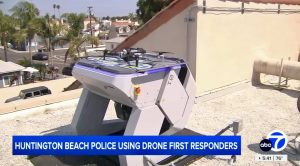New FAA Part 108 Rules: Transforming U.S. Drone Operations
Recently, the FAA introduced Part 108, marking a significant advancement in drone operations in the United States, particularly for Beyond Visual Line of Sight (BVLOS) flights, delivery services, autonomous missions, and broader commercial uses. These regulatory changes aim at reducing bureaucratic hurdles, paving the way for safe, innovative, and efficient drone usage.
What Is Part 108? New Rules, New Horizons
Part 108 is a newly proposed regulatory framework unveiled in August 2025, designed to support advanced commercial drone operations. It specifically authorizes routine BVLOS missions, complex autonomous flights, and scalable drone programs without constant need for waivers. The objective is to transition the U.S. drone industry from a waiver-dependent stage to a mature, standardized operational territory where frequent and innovative flights can occur safely and effectively.
Key goals:
- Enable routine, safe BVLOS operations at scale
- Integrate drones into the National Airspace System (NAS)
- Promote growth in delivery, agriculture, infrastructure inspection, civic, and emergency services
The Big Differences: Part 107 vs. Part 108
| Feature | Part 107 (Current) | Part 108 (Proposed) |
|---|---|---|
| BVLOS | Only via approval/waiver. Time-intensive, not scalable. | Allows routine BVLOS if operator complies with rule. |
| Tech Requirements | No mandated detect-and-avoid; safety is manual/visual. | Mandates certified detect-and-avoid, robust comms, safety technology. |
| Certification | Remote Pilot Certificate for each operator. | New operator qualifications possible, plus “permit” or “certificate” for organizations. |
| Operational Scope | Mostly visual line of sight, <400 ft AGL, <55 lbs. | Expanded weight classes, automated ops, multi-drone control, complex fleets. |
| Waivers | Needed for BVLOS, night ops, over people. | Eliminated in most BVLOS cases if operator follows rules. |
How Part 108 Works: Two Tiers, More Flexibility
Under Part 108, operators can obtain a Permit for simpler, low-risk BVLOS operations, like those in agriculture or pilot training, often subject to operational constraints like drone numbers and population density. Conversely, Certificates are proposed for more complex, high-risk operations involving urban environments and diverse missions, requiring thorough safety training and adherence to stricter oversight.
- Package Delivery
- Agricultural Use
- Aerial Surveying
- Civic Interest (government, public safety)
Weight Classes Expanded: New regulations permit drones up to 1,320 pounds for certain operations, a significant increase from the current 55-pound limit.
Technology Standards: Safety by Design
Mandatory Onboard Tech
- Detect-and-Avoid (DAA): All drones require certified DAA systems to autonomously navigate safely without constant human oversight.
- Robust Communication: Secure and reliable command links, especially critical for BVLOS and multi-drone operations.
- Remote ID: Drones must broadcast their ID and location to enhance airspace awareness and compliance.
- Lighting: Proper navigational and anti-collision lighting is mandatory for visibility in various conditions.
Operational Standards: Safe UAS design, performance adherence, and onboard telemetry are essential for incident oversight and reporting.
Airspace, Altitude, and “Drone Corridors”
- Default Altitude Cap: Routine operations usually capped at 400 feet above ground level.
- Shielded Operations: In shielded areas, drones have right-of-way, minimizing conflict with manned aircraft.
- Air Corridors: Special BVLOS routes might be established for dense operations, akin to drone highways.
- Airspace Integration: Coordination with Air Traffic Control (ATC) is emphasized for controlled airspace.
Pilot and Operator Certification
- BVLOS Training: Certifying requirements will include practical assessments and airspace integration training, highlighting their complexity over the current Remote Pilot Certificate.
- Crew Management: Inspired by aviation’s fatigue management systems, limitations on pilot shifts to reduce errors will be enforced.
Industry Impact: Who Wins?
- Delivery: Companies like Amazon and UPS can expand urban and suburban delivery operations without excessive waivers.
- Agriculture: With BVLOS, large-scale farms can employ numerous drones for monitoring and mapping.
- Survey & Inspection: Fully autonomous inspection of critical infrastructure like power lines and pipelines becomes a reality, increasing efficiency and safety.
- Public Safety: Emergency responders can utilize coordinated drone fleets for comprehensive search and rescue or disaster response operations.
Human Stories and Cultural Touchstones
Small startups can now launch extensive projects without overwhelming paperwork, leveraging advancements to deliver essential supplies swiftly, guided by AI and in compliance with the FAA. Industry insiders are already celebrating the newfound operational freedom, fostering internet memes reflecting this cultural shift where drone delivery becomes routine.
Mistakes to Avoid and Tips from the Pros
- Starting preparation for Part 108 certifications and technology standards is crucial for expanding services.
- Investing in top-tier DAA systems is no longer optional but essential for safe operation.
- Training pilots early on procedure, especially for BVLOS, sets operations up for success.
- Evaluating and upgrading fleets to meet new profound standards is vital to avoid disruptions.
- Engaging in the FAA’s comment window can influence the final rules.
Public Safety & Right-of-Way
Consistent with aviation practices, drones must yield to manned aircraft in general but have precedence in shielded areas, promoting efficient and safe urban integration.
From Nerdy Dreams to Mainstream Reality: What’s Next?
- More Jobs: The rise in demand for certified remote pilots and other drone-related positions boosts employment opportunities.
- Faster Innovation: Routine regulatory paths allow companies to focus on developing superior equipment and technology.
- Urban Droneports: Cities are now planning for drone-friendly infrastructure to accommodate the emerging drone logistics systems.
- Public Perception: As drones become more visible, discussions surrounding their impact on society, privacy, and jobs are expected to intensify.
How to Prepare: Action Steps for Every Drone Pioneer
- Evaluate current operations for BVLOS readiness, considering technology, training, and compliance standards.
- Plan budget allocation for essential upgrades, including advanced detection technologies.
- Participate in the regulatory process to help shape the future of drone legislation.
- Enroll teams in new certification courses for BVLOS and Part 108 readiness.
- Communicate with and educate the public to bolster support and trust.
- Align with proactive technology vendors who are adapting to Part 108 changes.
Further Learning and Where to Get Help
For complete insights and resources, explore credible platforms like DroneXL, Dronelife, and the FAA’s policy portal, providing extensive training materials, case studies, and the latest updates.
The introduction of Part 108 by the FAA offers more than just another regulatory framework; it signifies a leap forward, making BVLOS and autonomous operations on a wide scale more attainable. By getting ready, operators and organizations can excel in this promising new chapter of aviation, sidestepping traditional setbacks and feeling empowered to soar into the future.













